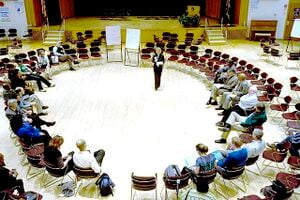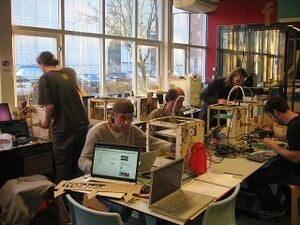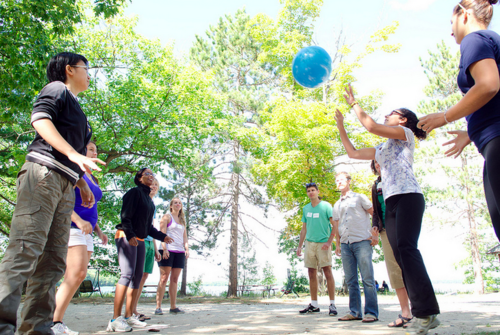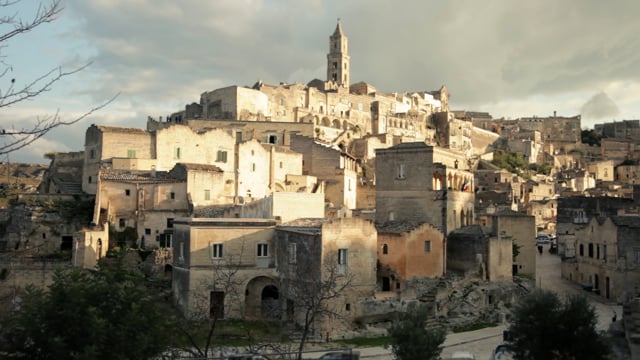
This article is an offshoot from Community involvement and is for global or international resources in that context. The majority of our information about this is collated via our place pages ...Near you.
Video[edit | edit source]
Networks[edit | edit source]
- Citizen Network, added 18:38, 24 December 2021 (UTC)
- Civicus, global alliance dedicated to strengthening citizen action and civil society around the world. Founded in 1993, the organisation today has members in more than 145 countries, with its headquarters in Johannesburg and offices in London, Geneva and New York. W
- Accountability Lab, "global networks of labs making governance work for people", added 18:29, 28 February 2022 (UTC)
Events[edit | edit source]

An invitation from the Transition Network. "...a time of creativity, dreaming, and sharing. A space to explore our longings for what we want the future to be. Connecting us to each other and to a future worth fighting for."[1]
Visions[edit | edit source]
Radical Visions of Future Government, media.nesta.org.uk (date not found)
CTRLShift 2019 on vimeo
Commons[edit | edit source]
- Paticipedia, A global community sharing knowledge and stories about public participation and democratic innovations.
Community resources[edit | edit source]

 “What if you could create a physical place in every community where people can gather and turn to one another in the event of a crisis?” To the Lifehouse!, Daily Alternative (Jul 10, 2024)
“What if you could create a physical place in every community where people can gather and turn to one another in the event of a crisis?” To the Lifehouse!, Daily Alternative (Jul 10, 2024)  Public luxury for the everyday citizens of Mexico City—with “100 Utopias” being built by new Mayor Clara Brugada, Daily Alternative (Jul 06, 2024) — "brilliant example of collective amenity and a public infrastructure of care", David Madden
Public luxury for the everyday citizens of Mexico City—with “100 Utopias” being built by new Mayor Clara Brugada, Daily Alternative (Jul 06, 2024) — "brilliant example of collective amenity and a public infrastructure of care", David Madden Fewer wildfires, great biodiversity: what is the secret to the success of Mexico’s forests?, theguardian.com (May 01, 2024) — More than half of the country’s forestry is in community and Indigenous hands – and from CO2 absorption to reducing poverty the results are impressive
Fewer wildfires, great biodiversity: what is the secret to the success of Mexico’s forests?, theguardian.com (May 01, 2024) — More than half of the country’s forestry is in community and Indigenous hands – and from CO2 absorption to reducing poverty the results are impressive
Community resources matter for community empowerment. Although Community and voluntary action has a proud tradition of innovation and doing a lot with a little, it's much harder to do something with virtually nothing. It may be that a community's greatest resource is its people, but community action can perhaps best flourish if backed up with at least some 'real' resources. In partnerships it's been observed that community and voluntary groups can, unfortunately, sometimes get ignored because they are perceived as not bringing any (what other partners percieve as 'real') resources to the table.
- What resources are there in your local community for community groups?
- Are there places for groups to meet (affordably)?
- Is there access to Information Technology and enough support to use it?
- How easy is it for new groups to form and sustain themselves?
- Are there ways for local community groups to network and support themselves and each other?
- Is there access to support for networks (looser groups, coalitions, etc.) and not just older more traditional forms of organisation?
Conversation starters[edit | edit source]
- the Good Life Conversation, Cormac Russell, September 7, 2017 nurturedevelopment.org. "In simple terms the following questions help people to explore what contributions they might make to communities in which they reside."
How to's[edit | edit source]

One of the hardest things (besides organising, running and maintaining!) a community group event is getting people to gel together at the beginning meeting(s). Using ice breakers to get people to know each other better is an important part of starting any community group where the members are from different areas and backgrounds.
more how to's:
- How to host: Stress-free communal eating, Wicked Leeks (May 15, 2023)
- Think, Do & Make: how to help people develop projects together by @noelito medium.com, Nov 5 2019
- ‘How to Set up a Municipalist Platform’, Barcelona en Comú, Mar 2016
- How to Start Participatory Budgeting in Your City, Dec 3, 2011, Shareable
Maps[edit | edit source]
Technology for transparency network
Quotes[edit | edit source]
"Turning toward local connection and action
It’s time to swim perpendicular to the tide, time to become a real citizen, and time to practice democracy like my life depends on it, because it does." Neal Gorenflo, January 31, 2020[2]
"With the increasing awareness of movements like Extinction Rebellion and Fridays For Future, citizen activism is a social trend that's here to stay. There’s incredible technology at our fingertips and when used strategically, it has the potential to influence millions." Gabriella Tavini[3]
There resides in all populations a "mass of sense lying in a dormant state - which good government should quietly harness." Tom Paine[4]
*"Where I live in Marin County, it was citizen action that instigated the preservation of hundreds of thousands of acres as open space and parkland; it was not government taking the initiative. That mostly happened in the pre-Internet days. Now that we’ve got the Net and there’s more talent, creativity and freedom in the civic sector than in government, it’s time that citizens once again take the lead in building tools and solving problems for their localities." cfigallo[5]
"Given how radical a departure these participatory ways of working are from the closed-door status quo (or the view that participation is limited to voting and opinion polling), we cannot declare, define, and repeat often enough what it could mean to embrace collaboration and co-creation; to make consultation part of operations on a day-to-day basis; to strive for constant conversation with an engaged and knowledgeable public and to reinvent the conception of public service and of the public servant as the steward of such a conversation.." Beth Simone Noveck[6]
Research[edit | edit source]
From what’s wrong to what’s strong: A guide to community-driven development, researchoutreach.org
Made to Measure, Participatory City, Year 1 Report for the EVERY ONE EVERY DAY initiative
Paticipedia, "an encyclopedia of participatory and deliberative practice"[7]
Living labs[edit | edit source]
Living labs are open innovation ecosystems in real-life environments using iterative feedback processes throughout a lifecycle approach of an innovation to create sustainable impact. They focus on co-creation, rapid prototyping & testing and scaling-up innovations & businesses, providing (different types of) joint-value to the involved stakeholders. In this context, living labs operate as intermediaries/orchestrators among citizens, research organisations, companies and government agencies/levels.
Living labs are open innovation ecosystems in real-life environments using iterative feedback processes throughout a lifecycle approach of an innovation to create sustainable impact. They focus on co-creation, rapid prototyping & testing and scaling-up innovations & businesses, providing (different types of) joint-value to the involved stakeholders. In this context, living labs operate as intermediaries/orchestrators among citizens, research organisations, companies and government agencies/levels.
The term "living lab" has emerged in parallel from the ambient intelligence (AmI) research communities context and from the discussion on experience and application research (EAR). The emergence of the term is based on the concept of user experience and ambient intelligence.
William J. Mitchell, Kent Larson, and Alex (Sandy) Pentland at the Massachusetts Institute of Technology are credited with first exploring the concept of a Living Laboratory. They argued that a living lab represents a user-centric research methodology for sensing, prototyping, validating and refining complex solutions in multiple and evolving real-life contexts. Nowadays, several living lab descriptions and definitions are available from different sources.
A living lab is a user-centered, open-innovation ecosystem, often operating in a territorial context (e.g. city, agglomeration, region, campus), integrating concurrent research and innovation processes within a public-private-people partnership.
The concept is based on a systematic user co-creation approach integrating research and innovation processes. These are integrated through the co-creation, exploration, experimentation and evaluation of innovative ideas, scenarios, concepts and related technological artefacts in real life use cases. Such use cases involve user communities, not only as observed subjects but also as a source of creation. This approach allows all involved stakeholders to concurrently consider both the global performance of a product or service and its potential adoption by users. This consideration may be made at the earlier stage of research and development and through all elements of the product life-cycle, from design up to recycling.
User-centred research methods, such as action research, community informatics, contextual design, user-centered design, participatory design, empathic design, emotional design, and other usability methods, already exist but fail to sufficiently empower users for co-creating into open development environments. More recently, the Web 2.0 has demonstrated the positive impact of involving user communities in new product development (NPD) such as mass collaboration projects (e.g. crowdsourcing, Wisdom of Crowds) in collectively creating new contents and applications.
A living lab is not similar to a testbed as its philosophy is to turn users, from being traditionally considered as observed subjects for testing modules against requirements, into value creation in contributing to the co-creation and exploration of emerging ideas, breakthrough scenarios, innovative concepts and related artefacts. Hence, a living lab rather constitutes an experiential environment, which could be compared to the concept of experiential learning, where users are immersed in a creative social space for designing and experiencing their own future. Living labs could also be used by policy makers and users/citizens for designing, exploring, experiencing and refining new policies and regulations in real-life scenarios for evaluating their potential impacts before their implementations.
Living labs are defined as user-centred, open innovation ecosystems based on a systematic user co-creation approach integrating research and innovation processes in real life communities and settings. In practice, living labs place the citizen at the centre of innovation, and have thus shown the ability to better mould the opportunities offered by new ICT concepts and solutions to the specific needs and aspirations of local contexts, cultures, and creativity potentials.
Living labs are organisations involving stakeholders from the quadruple helix to create a shared vision, mission and strategic goals with/for their stakeholders and define multiple different innovation projects existing out of co-creation activities.
This so-called 3-layered model was introduced by Dr. Dimitri Schuurman back in 2015. This model, part of his PhD dissertation "Bridging the gap between open and user innovation", widely used within ENoLL, the European Network of Living Labs, describes living labs as organisations existing out of 3 levels:
- On a macro level, a Living Lab is a public-private-people partnership consisting of different stakeholders, organized to carry out Living Lab research and Living Lab projects. We propose the term Living Lab constellation to refer to this level.
- On the meso level, we discern the Living Lab innovation projects that are being carried out within the Living Lab constellation. We can also refer to this as a Living Lab project.
- The research activities that are deployed in a Living Lab project we propose to label as the micro level activities in Living Labs. Mostly, this consists of a specific Living Lab methodology in order to 'cultivate user-led insights' and 'surface tacit, experiential and domain-based knowledge such that it can be further codified and communicated' (Almirall & Wareham, 2011)
Within a wide variety of different living labs, all living labs use the six same building blocks. ENoLL, the European Network of Living Labs, describes them as follows:
- Orchestration: the living lab operates as the orchestrator within the ecosystem to connect and partner up with relevant stakeholders
- Multi-stakeholder participation: taking a holistic view on society, involving stakeholders from the quadruple helix model (government, academia, private sector, and citizens)
- Active user involvement: a living lab involves relevant stakeholders 'actively' in all relevant activities, ensuring their feedback is captured and implemented throughout the whole lifecycle of the innovation
- Co-creation: in a living lab, values are bottom-up co-created not only for but also by all relevant stakeholders, ensuring a higher adoption at the end
- Real-life settings: a living lab operates in the real-life setting of the end users, infusing innovations into their real life instead of moving the users to test sites to explore the innovations
- Multi method approach: each living lab activity is problem driven. Therefore, the methodological approach towards every individual activity will be selected based on the expected outcomes of the activity and the stakeholders who needs to be involved.
From a conceptual perspective at the moment we identify 4 'types' of living labs:
- Urban & Rural Living Labs: Opening the city/region as a site for experimentation (+) co-creation, active user engagement, real-life settings experimentation, multi-stakeholders, multi-method.
- Research driven living lab (research focused): from out different topics of research this type of living labs are dealing with co-creating models for solving problems
- Living testbed (provider focused): this type of Living lab focuses on the development of new technologies and the acceptance of it by society via demonstration projects (e.g. House/Farm of the future, Industry 4.0 labs
- Living Labs as a service (for SME's & start ups): offering general LL tools & methodologies to companies to help them accelerate their innovation funnels
Most living labs combine several types, but their focus is on one of the above.
The European Network of Living Labs (ENoLL) is an international non-profit association (founded in 2007) which aims to promote and enhance user-driven innovation ecosystems, more precise the Living Labs globally.
ENoLL focuses on facilitating knowledge exchange, joint actions and project partnerships among its historically labelled +/- 500 members, influencing EU policies, promoting living labs and enabling their implementation worldwide.
From 2004 to 2007, the MIT House_n Consortium (now City Science), directed by Kent Larson, created and operated the PlaceLab, a residential living laboratory located in a multi-family apartment building in Cambridge. Massachusetts. The PlaceLab was, at the time, the most highly instrumented living environment ever created. Hundreds of sensors and semi-automated activity recognition allowed researchers to determine where occupants were, what they were doing, the systems they interacted with, and the state of the environment. Volunteer occupants lived in the facility for weeks at a time to test the effectiveness of proactive health systems related to diet, exercise, medication adherence, and other interventions. Kent Larson, Stephen Intille, Emmanuel Munguia Tapia, and other PlaceLab researchers twice received the “10-Year Impact Award” from Ubicomp: a “test of time” award for work that, with the benefit of that hindsight, has had the greatest impact. This work was followed by BoxLab, a home furniture object that captured and processed sensor data in the home, and CityHome, which integrated architectural robotics into furniture to effortless transform space from sleeping to socializing to working to dining (now launched commercially as ORI Living).
In 2010, Mitchell, Larson and Pentland, formed the first US-based living labs research consortium. According to the consortium website:
The convergence of globalization, changing demographics, and urbanization is transforming almost every aspect of our lives. We face new choices about where and how we work, live, travel, communicate, and maintain health. Ultimately, our societies are being transformed. MIT Living Labs brings together interdisciplinary experts to develop, deploy, and test - in actual living environments - new technologies and strategies for design that respond to this changing world. Our work spans in scale from the personal to the urban, and addresses challenges related to health, energy, and creativity.
The consortium has since been reorganized as the City Science Initiative at the MIT Media Lab, within the School of Architecture + Planning. There is now an international network of City Science Labs at Tongji University (Shanghai), Taipei Tech (Taipei), HafenCity University (Hamburg), Aalto University (Helsinki), ActuaTech (Andorra), and Toronto Metropolitan University (Toronto).
As of August 2019, Larson is Director of the City Science Initiative at the MIT Media Lab. and Pentland is Professor of Media Arts and Sciences, and MIT Media Lab Entrepreneurship Program Director (also within the School of Architecture + Planning). He has recently formed a partnership with the South Australian Government to set up a living lab in the Lot Fourteen hub, similar to MIT Living Labs in New York City, Beijing and Istanbul.
- Business cluster
- Citilab
- Concurrent engineering
- Context awareness
- Human-computer interaction
- Information science
- Social computing
- Peer-reviewed Technology Innovation Management Review special issue 2012 on living labs (open access journal)
- Eskelinen, Jarmo, García Robles, Ana, Lindy, Ilari, Marsh, Jesse, Muente-Kunigami, Arturo, Editors, 2015. Citizen-Driven Innovation – A Guidebook for City Mayors and Public Administrators. World Bank and ENoLL.
Sharing ideas and actions[edit | edit source]
- Citizens Foundation, connecting government and citizens, added 14:20, 19 December 2020 (UTC), see also: Iceland
- Manifesto for Democracy and Sustainability
Software[edit | edit source]
- Ethical Alternatives & Resources from ethical.net, added 10:41, 8 February 2022 (UTC)
- Polis, "real-time system for gathering, analyzing and understanding what large groups of people think in their own words, enabled by advanced statistics and machine learning", added 10:41, 8 February 2022 (UTC)
- Promise Tracker, Data collection for civic action. After an election, how can citizens hold elected leaders accountable for promises they made during the campaign season? We believe that informed communities, equipped with data, are the best positioned to assess the performance of their representatives and advocate for change on a local level. Promise Tracker explores how citizen monitoring can extend civic engagement between election cycles.
Other Resources[edit | edit source]
- People Powered, global hub for participatory democracy, Resources from peoplepowered.org, Video, peoplepowered.orgadded 10:41, 11 March 2022 (UTC)
- A Charter for Democracy on Commons Transition Strategies Wiki (creative commons license)
- Civic Activism
- Civic Commons Wiki, an effort to provide a permanent, sustainable organization to assist public agencies in the adoption of open systems and collaborative technologies, and to coordinate the co-creation of these technologies among agencies to ensure interoperability and shareability. Civic Commons will provide infrastructure, knowledge, and toolsets to government entities, and encourage the development of shared "civic software" and protocols, and supply optional technical infrastructure (such as data and project hosting) as needed.
- On Relational Facilitation: Supporting the Creative Potential of Divergent Perspectives, by R. Zubizarreta, dk-media.s3.amazonaws.com added 17:30, 17 February 2020 (UTC)
- Imagine Chicago, Imagine projects and networks in th UK, Europe and Australia have been modelled on Imagine Chicago.
- Open Government Partnership Participation & Co-creation Standards, added Feb 2017
- Benchmark study data The state of open data from different perspectives, including that of the public / citizens
- Introducing the Cycle of Transparency, Sunlight Foundation Blog, 03/10/10
- Resources from Imagine Chicago
- Making is Connecting - site about Making is Connecting project, with extracts, video, etc. W
- Regulation on collaboration between citizens and and the City for the care and regeneration of urban commons, comune.bologna.it
- Who Ya Gonna Call? Deliberative Democracy Resources
- Wise Democracy Project
- World café, A world café (styled as World Café) is a structured conversational process for knowledge sharing in which groups of people discuss a topic at several tables, with individuals switching tables periodically and getting introduced to the previous discussion at their new table by a "table host". W
- What is an Empathy Circle? empathycircle.com
See also[edit | edit source]
local information can be found, or shared, via our many location pages
References
- ↑ Transition Network
- ↑ shareable.net
- ↑ thealternative.org.uk
- ↑ Guardian review of Hilary Wainwright’s book Reclaim the State: Adventures in Popular Democracy, July 2003
- ↑ pResilience, April 7, 2009
- ↑ Medium
- ↑ The Alternative UK, Jan 27, 2019














